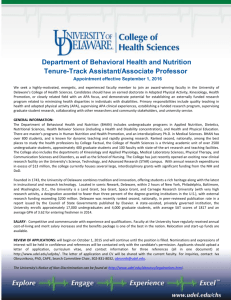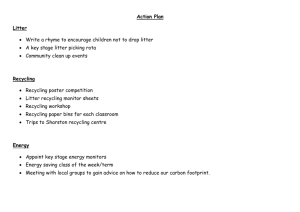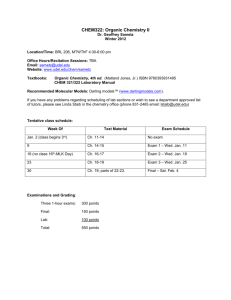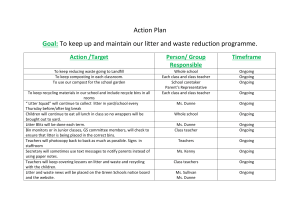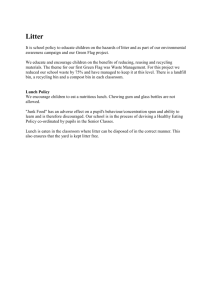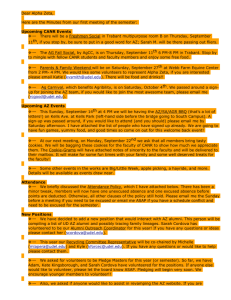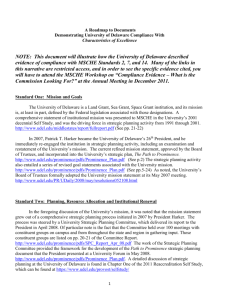Recycling Leaves What organic material is full of nutrients, essential
advertisement
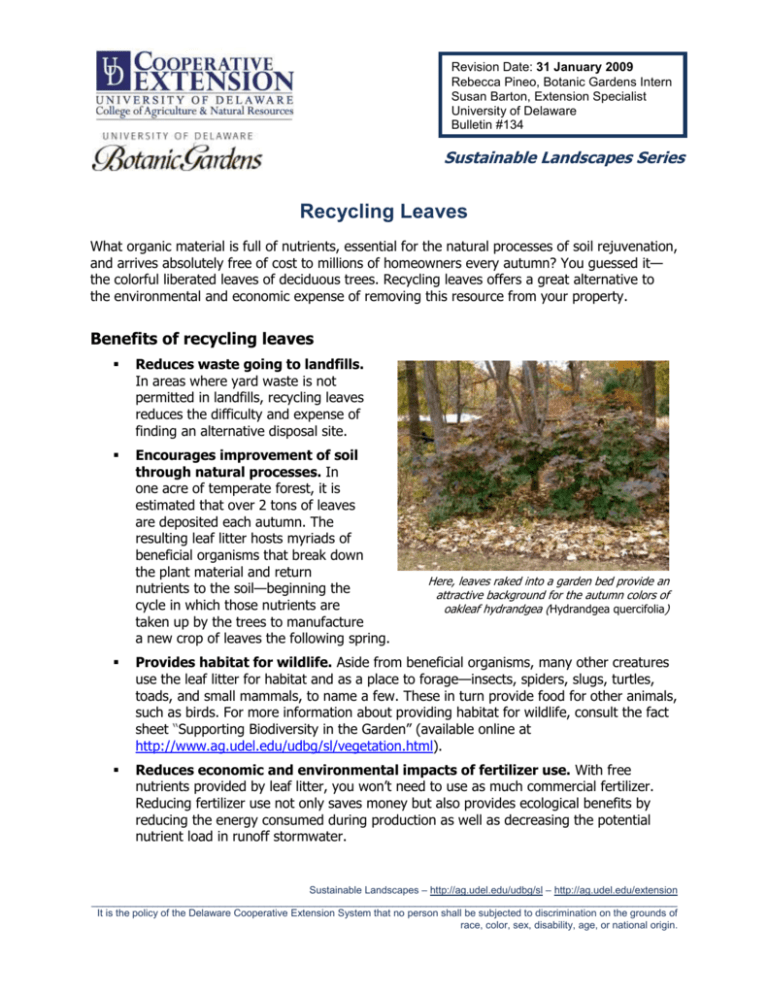
Revision Date: 31 January 2009 Rebecca Pineo, Botanic Gardens Intern Susan Barton, Extension Specialist University of Delaware Bulletin #134 Sustainable Landscapes Series Recycling Leaves What organic material is full of nutrients, essential for the natural processes of soil rejuvenation, and arrives absolutely free of cost to millions of homeowners every autumn? You guessed it— the colorful liberated leaves of deciduous trees. Recycling leaves offers a great alternative to the environmental and economic expense of removing this resource from your property. Benefits of recycling leaves Reduces waste going to landfills. In areas where yard waste is not permitted in landfills, recycling leaves reduces the difficulty and expense of finding an alternative disposal site. Encourages improvement of soil through natural processes. In one acre of temperate forest, it is estimated that over 2 tons of leaves are deposited each autumn. The resulting leaf litter hosts myriads of beneficial organisms that break down the plant material and return nutrients to the soil—beginning the cycle in which those nutrients are taken up by the trees to manufacture a new crop of leaves the following spring. Here, leaves raked into a garden bed provide an attractive background for the autumn colors of oakleaf hydrandgea (Hydrandgea quercifolia) Provides habitat for wildlife. Aside from beneficial organisms, many other creatures use the leaf litter for habitat and as a place to forage—insects, spiders, slugs, turtles, toads, and small mammals, to name a few. These in turn provide food for other animals, such as birds. For more information about providing habitat for wildlife, consult the fact sheet “Supporting Biodiversity in the Garden” (available online at http://www.ag.udel.edu/udbg/sl/vegetation.html). Reduces economic and environmental impacts of fertilizer use. With free nutrients provided by leaf litter, you won’t need to use as much commercial fertilizer. Reducing fertilizer use not only saves money but also provides ecological benefits by reducing the energy consumed during production as well as decreasing the potential nutrient load in runoff stormwater. Sustainable Landscapes – http://ag.udel.edu/udbg/sl – http://ag.udel.edu/extension _________________________________________________________________________________________________________ It is the policy of the Delaware Cooperative Extension System that no person shall be subjected to discrimination on the grounds of race, color, sex, disability, age, or national origin. How to recycle leaves Mow them and leave them where they lie. If your leaf layer is less then one inch, wait for it to dry out as much as possible and simply run over the leaves with a lawn mower. (If the leaves are somewhat damp, you may need to mow them again at a right angle to your original path.) The resulting small particles will decompose quickly without suffocating your grass, adding their organic bounty of nutrients. If your leaf layer is greater than one inch, recycle using one of the methods below. Shred them and use as mulch. Shredding can be accomplished in a few ways. You can use a bag attachment on your lawn mower and simply run over them as they lay. Or, you can first rake them into a pile and then run over them several times. Empty the bag frequently in a wheel barrow, on a cart, or onto a tarp. You can also purchase a vacuum shredder to collect and shred leaves; this will make a fine mulch, but can only be used with dry leaves. A string trimmer dipped into a sturdy garbage can full of dry leaves also works as an effective shredder. Shredded leaf litter makes fantastic natural mulch that will suppress weeds, regulate soil temperature, conserve moisture, reduce soil erosion and compaction, and decompose over time to provide nutrients. For best results, add 3–4 inches of leaf litter mulch around shrubs or trees and 2–3 inches over perennial beds. How NOT to Recycle Your Leaves Never burn your leaves, as this generates carbon monoxide and chemical compounds known to cause cancer. Shred them and till into the soil. In addition to using shredded leaves as mulch, you can spread them over fall planting beds and till them in to the soil, improving drainage as well as adding nutrients. You can also spread them over annual and vegetable beds and till them in prior to planting in the spring. Compost them, shredding them first for best results. Leaf litter makes fabulously rich compost. For quickest results, shred the leaves first and turn the pile often. For more information about home composting methods, consult the fact sheet “Yard Waste and Composting,” available at http://ag.udel.edu/extension/horticulture/ Additional Resources Yard Waste and You, and the Ban Now in Effect in Northern New Castle County http://www.dnrec.delaware.gov/yardwaste/Pages/Yard%20waste%20explained.aspx. _________________________________________________________________ Bibliography Sustainable Landscapes – http://ag.udel.edu/udbg/sl – http://ag.udel.edu/extension _________________________________________________________________________________________________________ It is the policy of the Delaware Cooperative Extension System that no person shall be subjected to discrimination on the grounds of race, color, sex, disability, age, or national origin. Delaware Department of Natural Resources and Environmental Control. (Unknown date). Yard Waste and You, and the Ban Now in Effect in Northern New Castle County. Retrieved November 20, 2008 from http://www.dnrec.delaware.gov/yardwaste/Pages/Yard%20waste%20explained.aspx. Keyser, Joe. (Unknown date). Turning Autumn Leaves into Healthy Lawns. The Green Man: Earth-Friendly Gardening & Landscaping. Montgomery County Department of Environmental Protection. Retrieved November 20, 2008 from http://www.montgomerycountymd.gov/content/dep/greenman/autumnleaves.pdf. Mannino, Vince et al. (Unknown date). Don’t Bag It: Leaf Management Plan. Texas A&M System Department of Horticultural Sciences AgriLife Extension. Retrieved November 20, 2008 from http://aggie-horticulture.tamu.edu/extension/homelandscape/dontbag/dontbag.html. Marr, Charles W. and Robert I. Neier. (1995). Solid Waste Management Fact Sheet No. 12: Leaf Recycling. Kansas State University Cooperative Extension Service. Retrieved November 20, 2008 from http://www.oznet.ksu.edu/library/solw2/ep12.pdf. Williams, Dave. (Unknown date). Recycling Leaves. Alabama Cooperative Extension System. Retrieved November 20, 2008 from www.aces.edu/dept/extcomm/specialty/leaves.html. Sustainable Landscapes – http://ag.udel.edu/udbg/sl – http://ag.udel.edu/extension _________________________________________________________________________________________________________ It is the policy of the Delaware Cooperative Extension System that no person shall be subjected to discrimination on the grounds of race, color, sex, disability, age, or national origin.



